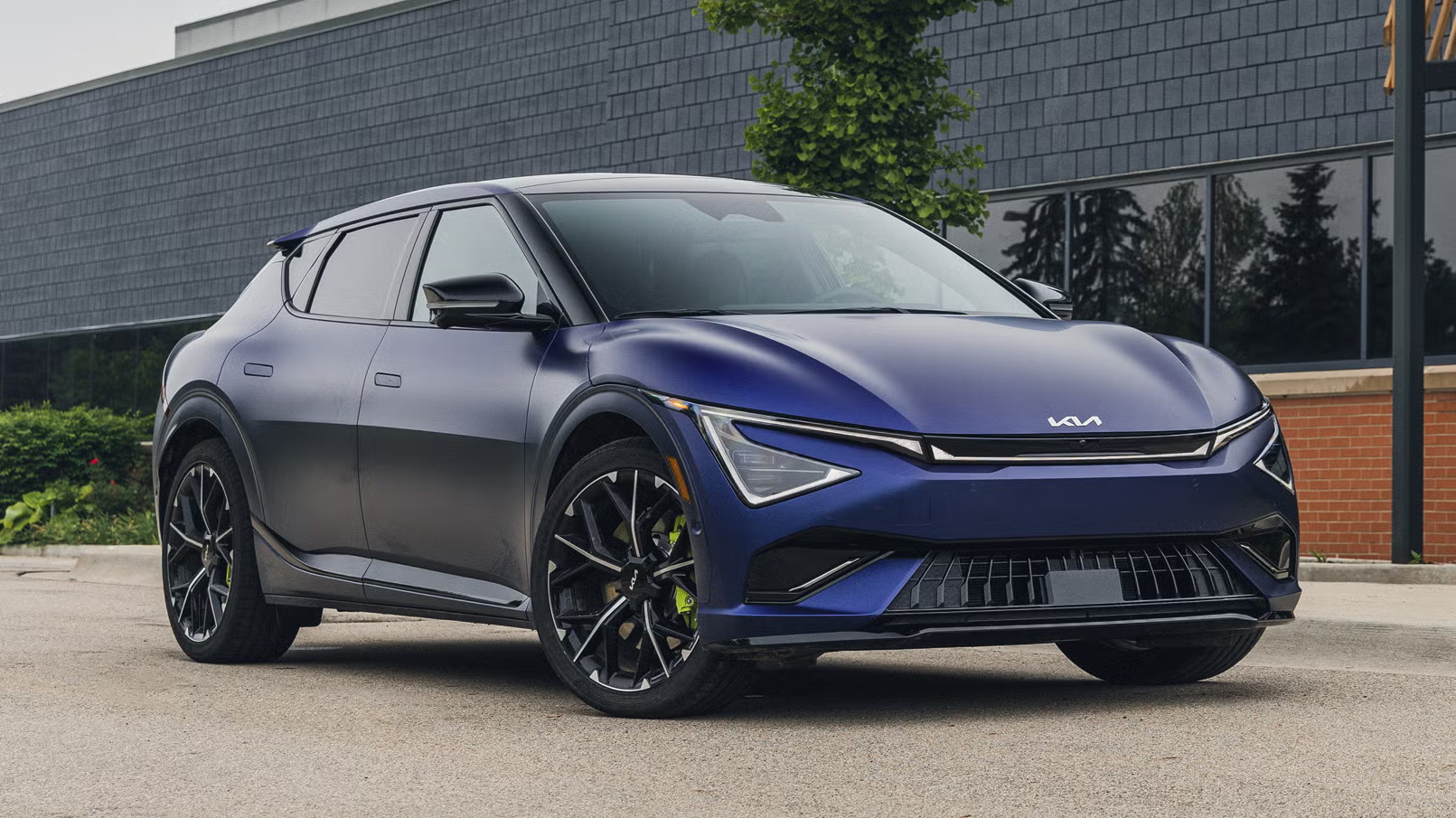Charging speed is often the first thing people think about when evaluating electric vehicles. The common assumption is that faster is always better and that a good EV must support ultra-fast charging at high-voltage DC stations. While those features are great to have, they don’t always reflect the everyday experience of owning and operating an electric car.
In the real world, most EV owners rely on home charging more than they do on highway charging networks. And more often than not, that home charging setup is limited to a lower-voltage source, especially in older houses or apartment complexes. In these cases, how well an EV performs on lower-voltage charging becomes more than just a convenience; it becomes essential.
Low-voltage charging setups include the standard 120V outlets found in most homes and the more common 240V Level 2 chargers that might be installed in garages or found at local businesses. Unlike high-powered charging stations that deliver rapid energy at public locations, these setups operate with limited power.
Charging from a 120V outlet, sometimes called Level 1 charging, can feel painfully slow for EVs with large batteries unless the car is designed to make the most out of every watt. On the other hand, 240V Level 2 charging can be very effective when paired with an efficient onboard charger and smart energy management software.
Some EVs are built with these scenarios in mind. They don’t just depend on the speed of the charger; they also optimize how power is converted, stored, and preserved during the charging process. Features like efficient onboard chargers, thermal battery regulation, and software-controlled charge limits can have a big impact.
Even the vehicle’s range per kilowatt-hour plays a role. An EV that consumes less energy per mile can go further with the same amount of charge, making low-voltage setups more practical for daily use.
The vehicles featured in this article aren’t just about how quickly they can charge under perfect conditions. They’ve been selected for how effectively they manage slow charging when high-powered options aren’t available. This includes people who live in apartments, rural homes, or areas where installing a dedicated high-speed charger just isn’t feasible. These EVs shine in situations where patience and power management matter more than raw speed.
Whether you’re planning to rely on a standard wall outlet overnight or you’re considering installing a Level 2 charger and want to get the most value out of it, choosing the right EV can make a big difference. The right combination of battery size, efficiency, and smart charging features can turn a slow setup into a perfectly viable daily charging solution.
What follows is a breakdown of ten electric vehicles that deliver reliable charging performance even when conditions are less than ideal. These aren’t just fast-charging champions, they’re flexible, practical, and ready for the real world.
Also Read: 5 Fords Built to Last vs 5 That Need Constant Repairs
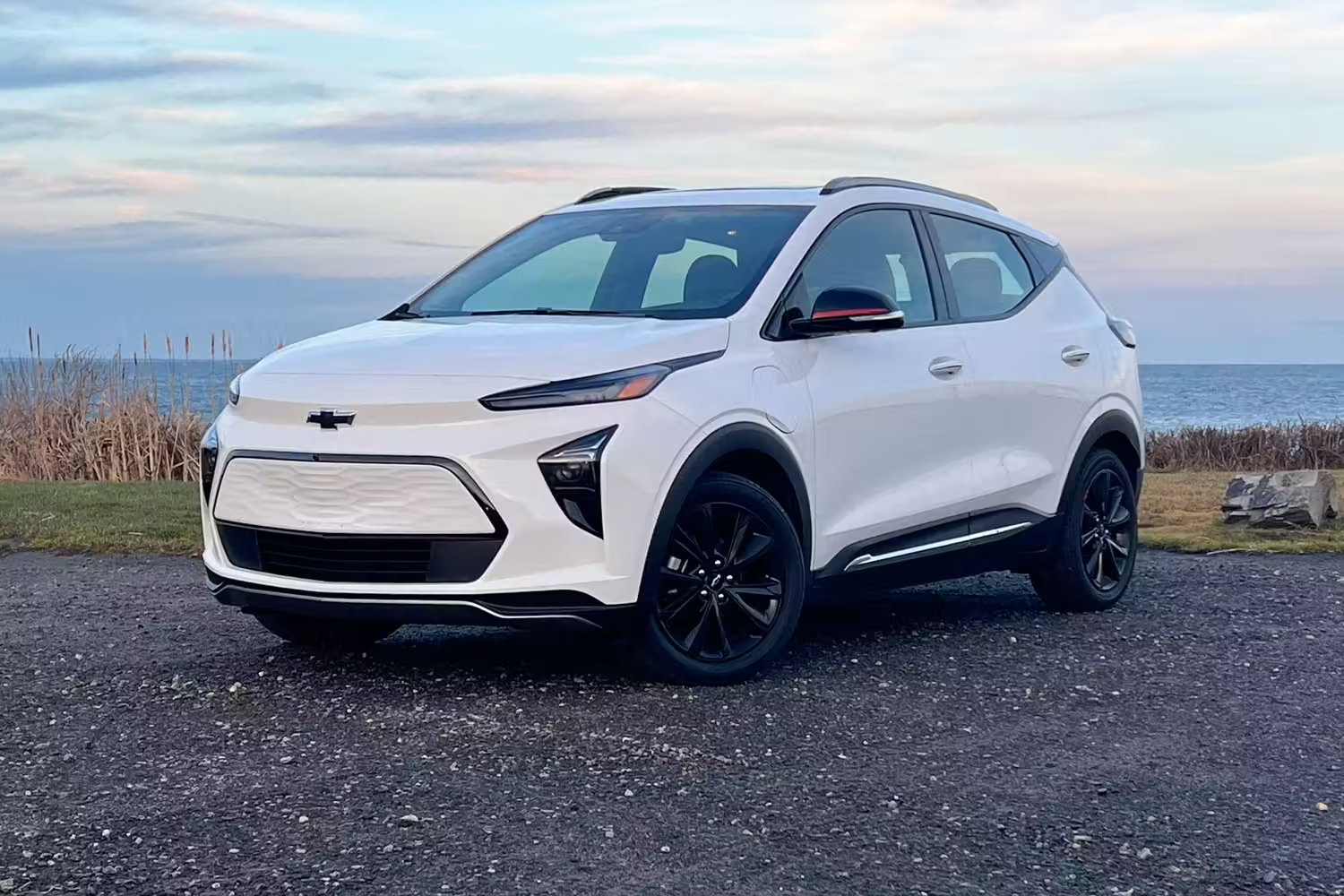
1. Chevrolet Bolt EV
The Chevrolet Bolt EV has become a favorite for those seeking affordable electric mobility with decent range and user-friendly charging. One of the standout aspects of the Bolt is its ability to pull meaningful charge from a basic 120V household outlet.
Many owners have reported gaining 4 miles of range per hour on such setups, which is quite usable for overnight home charging. On a standard 240V Level 2 charger, the Bolt performs even better, thanks to its 11.5 kW onboard charger.
Its battery pack, rated at around 66 kWh, is well-matched to the vehicle’s consumption rate, which means every kilowatt added translates into a solid range gain. The Bolt’s power management system is designed to prioritize stability and safety while extracting the most from low-powered sources.
That gives users confidence even when they’re limited to slow outlets. It’s particularly effective when parked overnight at places with limited charging infrastructure.
What also helps is the vehicle’s software, which offers good feedback on charging time estimates and allows the user to set charging preferences. You can adjust when charging begins to take advantage of lower electricity rates or to manage load during peak times.
The software doesn’t just tell you what’s happening, it helps you plan around your setup. This is especially useful for users relying on shared or limited circuits at home or work.
The Bolt may not be the flashiest EV on the road, but it proves that reliable, efficient low-voltage charging can be more than enough for daily use.
It strikes a great balance between battery capacity, charging efficiency, and user interface. For those without access to high-speed public charging, the Bolt offers a practical and dependable solution for everyday commuting and errands.
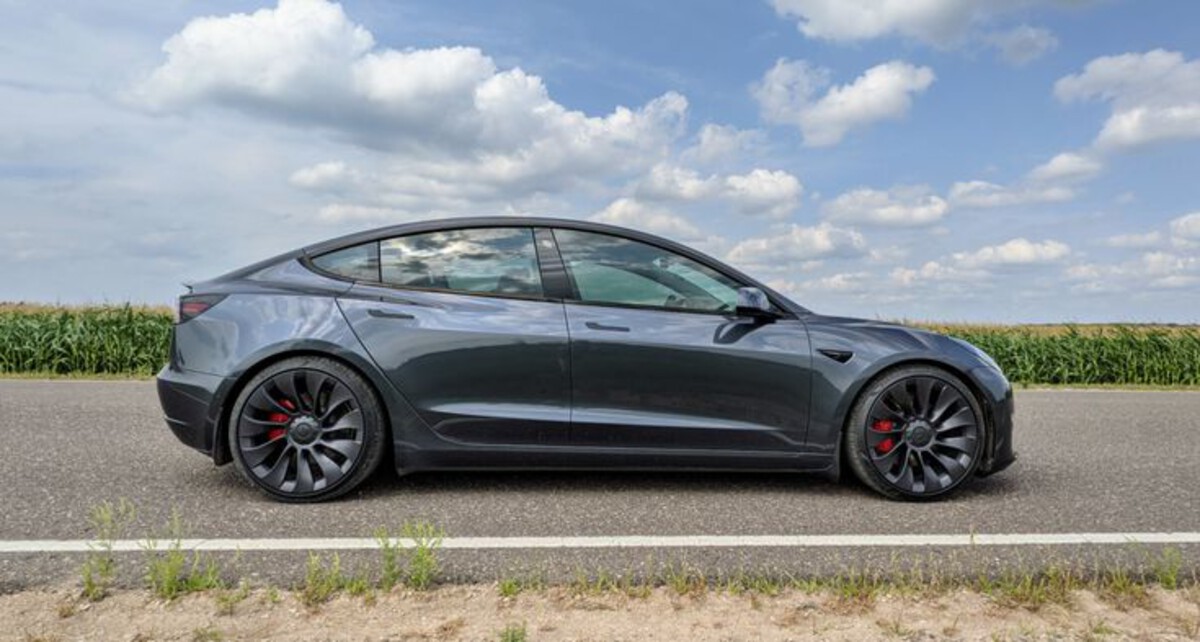
2. Tesla Model 3
The Tesla Model 3, especially the Long Range version, is well-known for its advanced charging capabilities, but what often goes unnoticed is how effectively it manages lower-voltage charging.
Tesla has engineered the Model 3 with a highly optimized onboard charger, capable of pulling in up to 11.5 kW from a Level 2 source. Even on standard 240V power, the car can gain over 40 miles of range per hour of charging, depending on configuration.
The Model 3’s real advantage lies in its battery and software synergy. Tesla uses lithium-ion cells that are efficient even during slow charging, and the vehicle’s thermal management system keeps the battery at the ideal temperature. This matters more than people think.
A battery that stays in the right thermal window can take a charge faster and with less energy loss, which is exactly what you want when relying on a modest power source.
Another benefit is Tesla’s in-car interface and mobile app, which give the driver fine control over charging behavior. You can set the maximum current draw manually, which is ideal when plugging into older wiring or shared circuits.
You can also schedule charging sessions and monitor battery health in real time. This kind of transparency reduces the guesswork often involved with Level 1 or Level 2 charging.
What separates the Model 3 from many competitors is how consistent it is across different environments. Whether you’re using a Tesla Wall Connector or a basic 120V plug in your garage, the car maintains stable, predictable performance.
For those without access to fast-charging networks or who frequently park at low-powered outlets, the Model 3 remains one of the most efficient choices on the market.
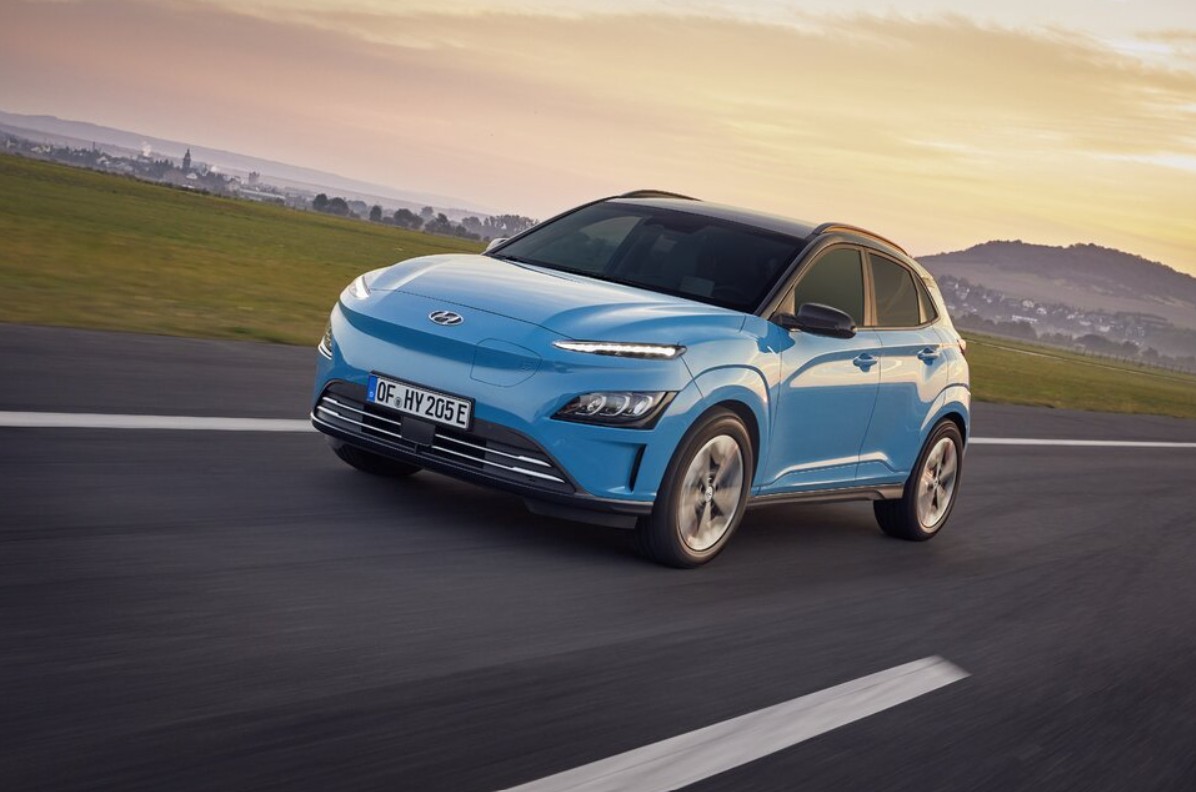
3. Hyundai Kona Electric
The Hyundai Kona Electric has become a sleeper hit in the EV world, and a large part of its appeal is how practical it is for real-world users.
Its 7.2 kW onboard charger might not sound impressive next to some 11 kW systems, but the Kona makes the most of every watt. On a standard 240V outlet, it can regain about 30 miles of range per hour, making it very suitable for overnight top-ups.
Even when limited to a 120V outlet, the Kona performs better than average. The battery’s design and management system allow it to trickle in energy without much heat loss or conversion inefficiency.
The compact crossover design also means it doesn’t weigh as much as some larger EVs, which helps the range per charge ratio. This is important when using slower sources because every mile you gain counts more.
Hyundai also offers a well-structured charging schedule system through its infotainment and mobile app. You can easily adjust charging windows and target levels, making it easier to work within energy constraints at home or when using public charging stations with limited power.
The system is straightforward, with clear graphics and notifications, which is helpful for users who aren’t deeply technical.
From a cost perspective, the Kona is relatively affordable and yet doesn’t compromise on range or charging practicality. Its strong efficiency means you don’t need to worry much about squeezing in fast charging sessions during your day.
For anyone living in an apartment or older house with limited electrical capacity, the Kona Electric offers one of the more user-friendly and adaptable solutions in the EV market.
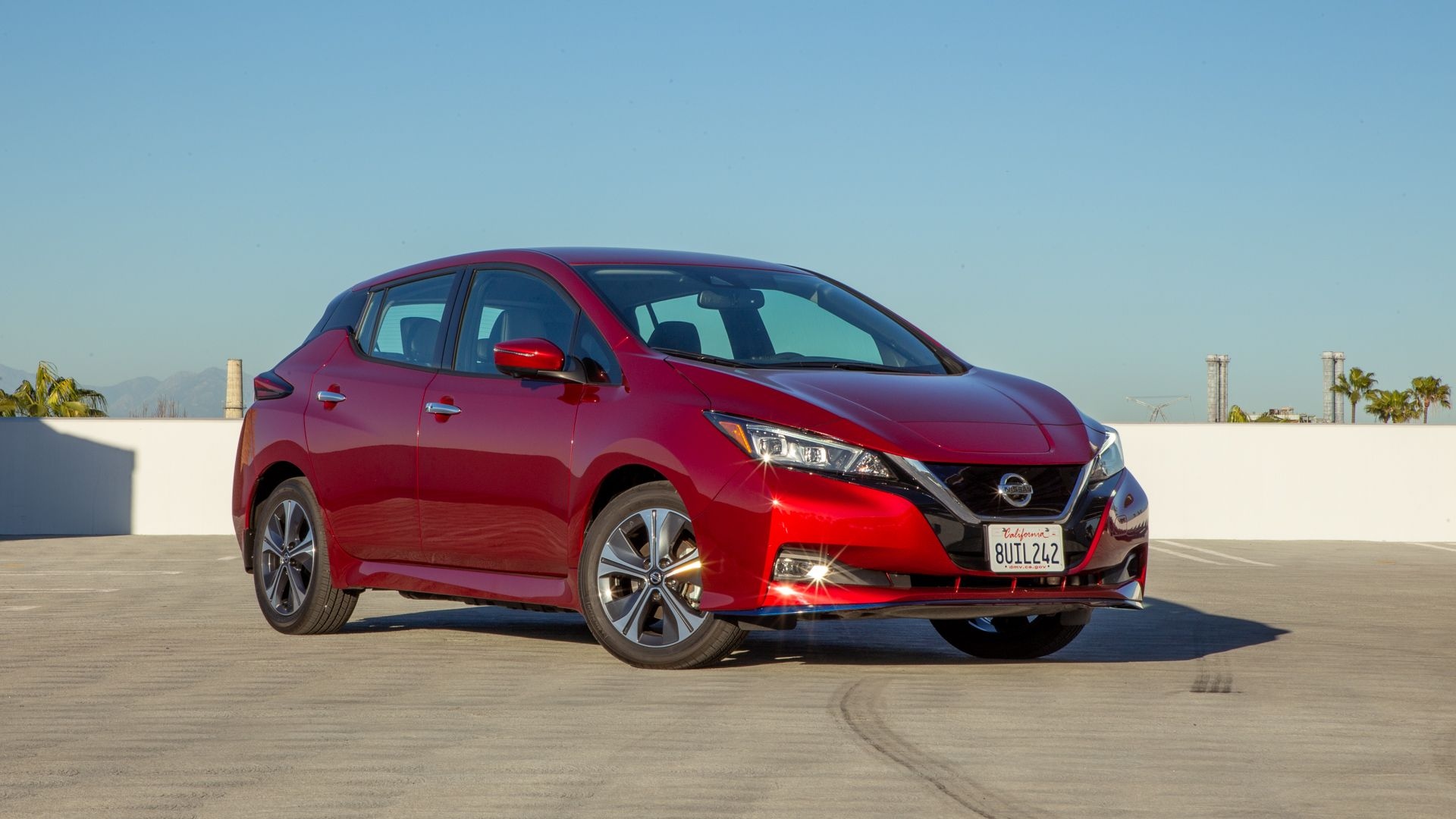
4. Nissan Leaf Plus
The Nissan Leaf has been around longer than most other EVs, and while it lacks some of the flashier features of newer models, it still performs admirably when charging from lower-voltage sources.
The Leaf Plus, with its larger 62 kWh battery, includes a 6.6 kW onboard charger that delivers stable performance from typical 240V outlets, gaining around 25 miles per hour of charging.
Even more impressive is the car’s resilience during slower Level 1 charging. The Leaf’s battery chemistry and thermal management make it more tolerant of trickle charging, a feature that suits users who can only plug in at night using basic 120V power.
Many long-time owners use the Leaf this way, and its gradual, dependable charge rate fits into most daily routines without issue.
The Leaf also allows for flexible charging control through Nissan’s mobile app and infotainment interface. While the system isn’t as advanced as Tesla’s, it provides all the necessary tools for scheduling, monitoring, and optimizing home charging.
There’s even an option to prioritize battery life by limiting charging thresholds, which is useful when using slower sources regularly.
While the Leaf Plus isn’t the fastest or most modern EV on the list, it’s one of the most forgiving when it comes to infrastructure limitations.
Its widespread availability and long history in the market mean there’s a strong community of users who’ve found ways to get the most out of it even in less-than-ideal charging situations. If you’re working with limited power, the Leaf remains a trustworthy choice.
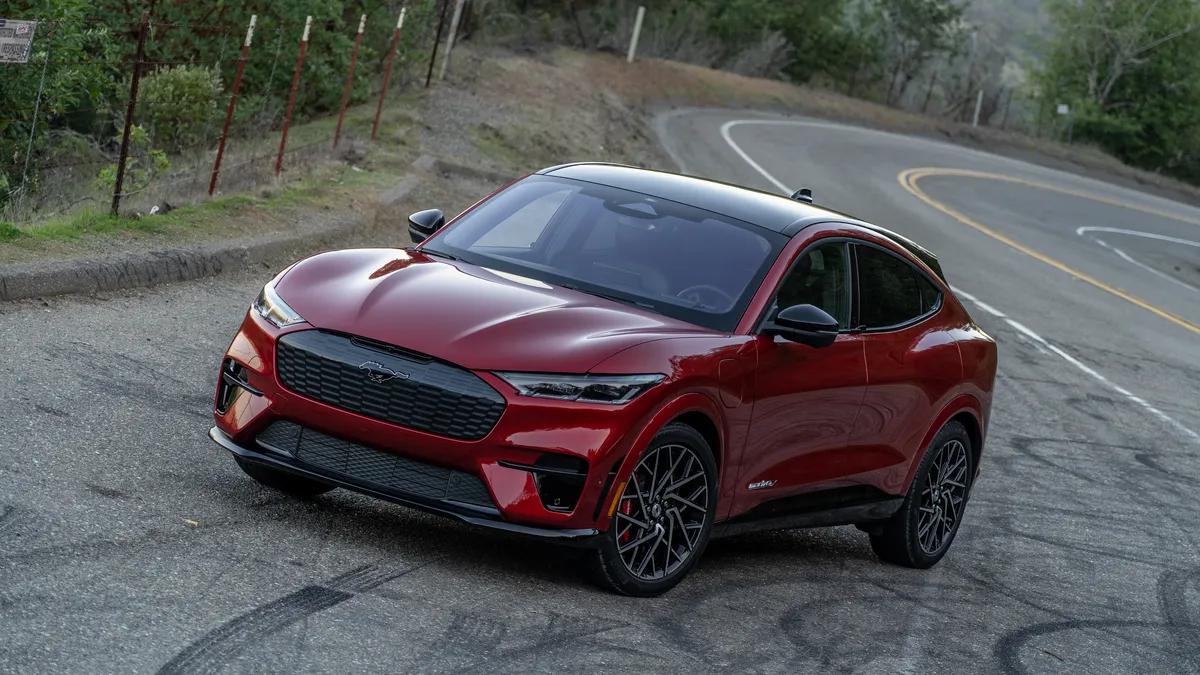
5. Ford Mustang Mach-E
Ford’s Mustang Mach-E has been praised for its stylish looks and respectable driving dynamics, but it also deserves recognition for how it handles low-voltage charging. Equipped with a capable 10.5 kW onboard charger, the Mach-E can take full advantage of Level 2 setups, adding over 30 miles of range per hour. On lower-powered circuits, its software keeps the charging process efficient and safe.
The Mach-E’s battery system is built to manage energy flow intelligently, especially in conditions where power supply is constrained. It manages heat buildup and energy conversion in ways that let it squeeze extra efficiency from slower chargers.
For example, a typical 120V outlet can provide roughly 3–4 miles per hour, which is enough for overnight home charging if your commute isn’t too long. One standout feature is the FordPass app, which offers extensive control over the vehicle’s charging schedule, status, and preferences.
Users can set preferred times, charging limits, and receive updates on progress. This allows for a more hands-off experience, especially if you’re working with a limited setup and need to ensure the car charges efficiently while you sleep or work.
Another strength of the Mach-E is its adaptive behavior. The car learns your routine and adjusts charging behavior to meet your expected use.
This helps reduce unnecessary battery strain and maximizes efficiency, even when drawing power from a less robust source. If you’re looking for an EV that’s both performance-focused and practical in everyday low-voltage conditions, the Mach-E is a solid pick.
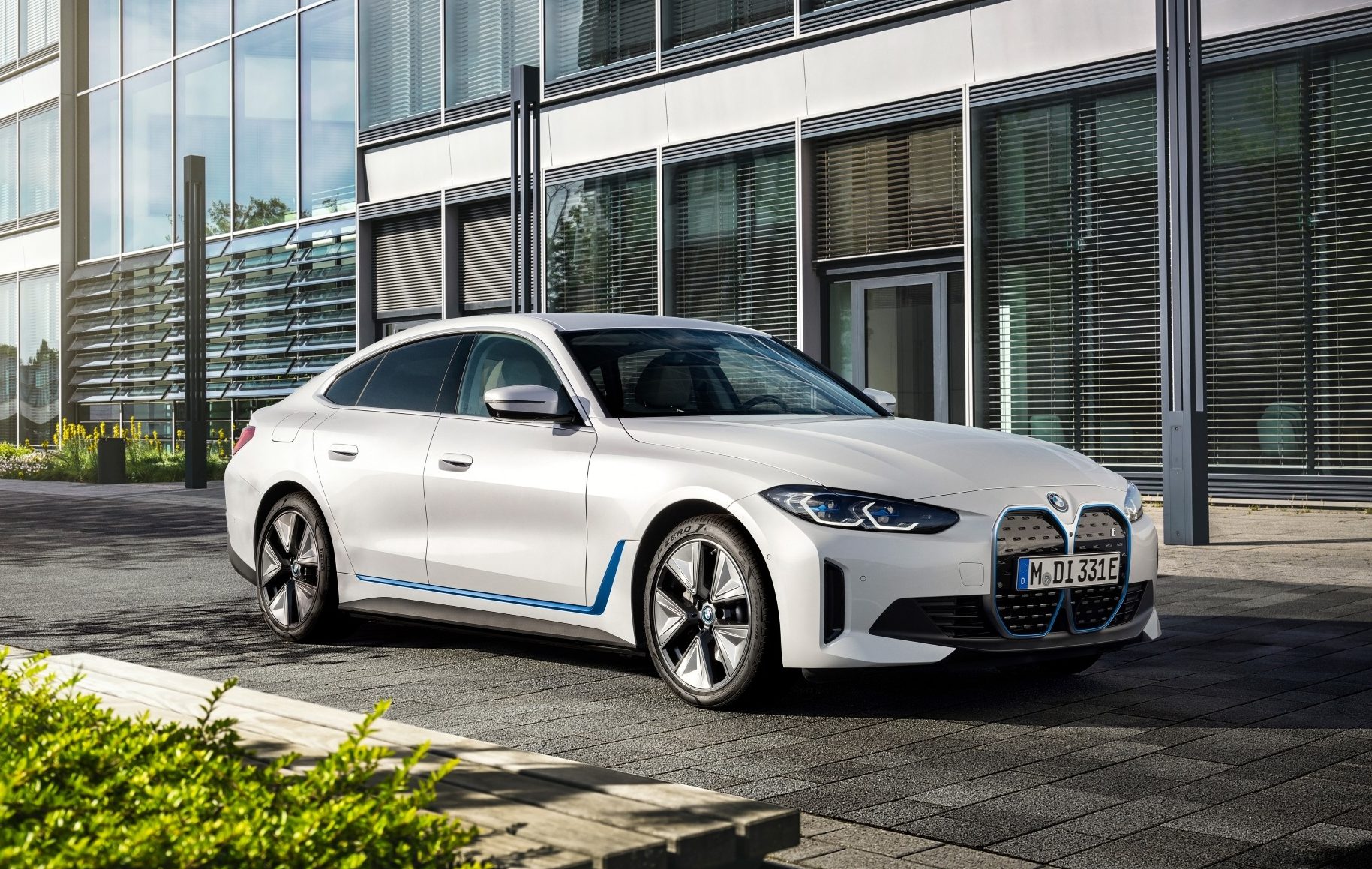
6. BMW i4 eDrive40
The BMW i4 eDrive40 stands out in the premium electric sedan category for its performance and long-range capability, but it also performs surprisingly well in low-voltage charging environments.
This is partly thanks to its efficient 11 kW onboard charger, which can operate comfortably on both Level 1 and Level 2 setups. Even though the i4 is marketed as a performance-oriented vehicle, BMW made sure it also meets the needs of drivers who may not have access to high-speed infrastructure.
On a 240V outlet, the i4 can recharge its 81 kWh battery with a high degree of consistency. It provides around 37 to 40 miles of range per hour, depending on climate and load.
What really makes this notable is the fact that the i4’s range is quite long to begin with, so even an overnight charge on a basic Level 2 system gets most users back to 100 percent by morning. This makes the vehicle suitable for users who travel moderate daily distances but do not have access to fast charging.
BMW’s charging interface is also smooth and intuitive. Whether accessed from the central infotainment screen or through the BMW mobile app, users have complete control over when and how the car draws power.
It’s easy to schedule charging during low-rate electricity periods or limit charge percentages for long-term battery health. These options make a difference when using weaker power sources that can only deliver modest charge rates over many hours.
The thermal management system in the i4 plays a crucial role in its ability to charge consistently. On low-voltage setups, temperature control ensures that the battery stays within its most efficient range, minimizing energy loss.
Even if you’re only gaining 3 to 5 miles per hour on a 120V outlet, those miles add up when the car spends eight to ten hours plugged in. The i4 eDrive40 proves that a luxury EV doesn’t have to sacrifice charging flexibility for the sake of speed and performance.
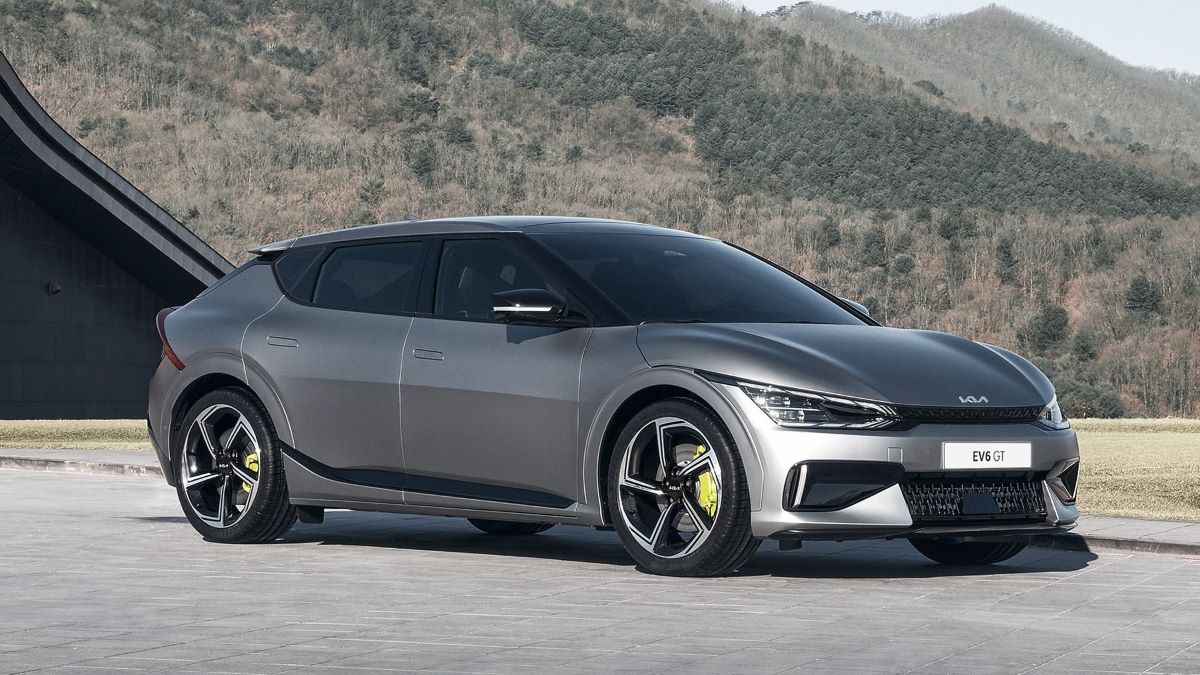
7. Kia EV6
The Kia EV6 has become one of the most praised electric vehicles in recent years, known for its modern design, impressive range, and ultra-fast charging capability. But while its DC fast charging speeds make headlines, the EV6 also does a commendable job with low-voltage sources. Equipped with an 11 kW onboard charger, the vehicle handles Level 2 setups with ease and remains usable on basic 120V outlets.
On a typical 240V residential connection, the EV6 gains about 33–38 miles of range per hour, depending on conditions. This is enough to replenish a depleted battery overnight, especially if your daily driving needs are below average.
The vehicle’s battery efficiency and low consumption rate help this even more, allowing users to go further per kilowatt charged. That’s critical for users relying on garage plugs or other limited sources.
Kia’s software support in the EV6 deserves special mention. Through the vehicle’s touchscreen and the Kia Connect app, owners can control scheduling, maximum charge levels, and temperature pre-conditioning.
When charging from a limited source, features like climate preconditioning help optimize range by reducing the energy needed once you begin driving. You can also lock in lower current settings for safety on old wiring systems.
The EV6 also includes a unique vehicle-to-load (V2L) function, which allows the car to power devices and even homes during outages.
While this isn’t directly related to charging from low voltage, it highlights the engineering that went into making the vehicle adaptable to a variety of power scenarios. The EV6 is a future-proof vehicle that doesn’t demand a high-end charging setup to be convenient and useful day to day.
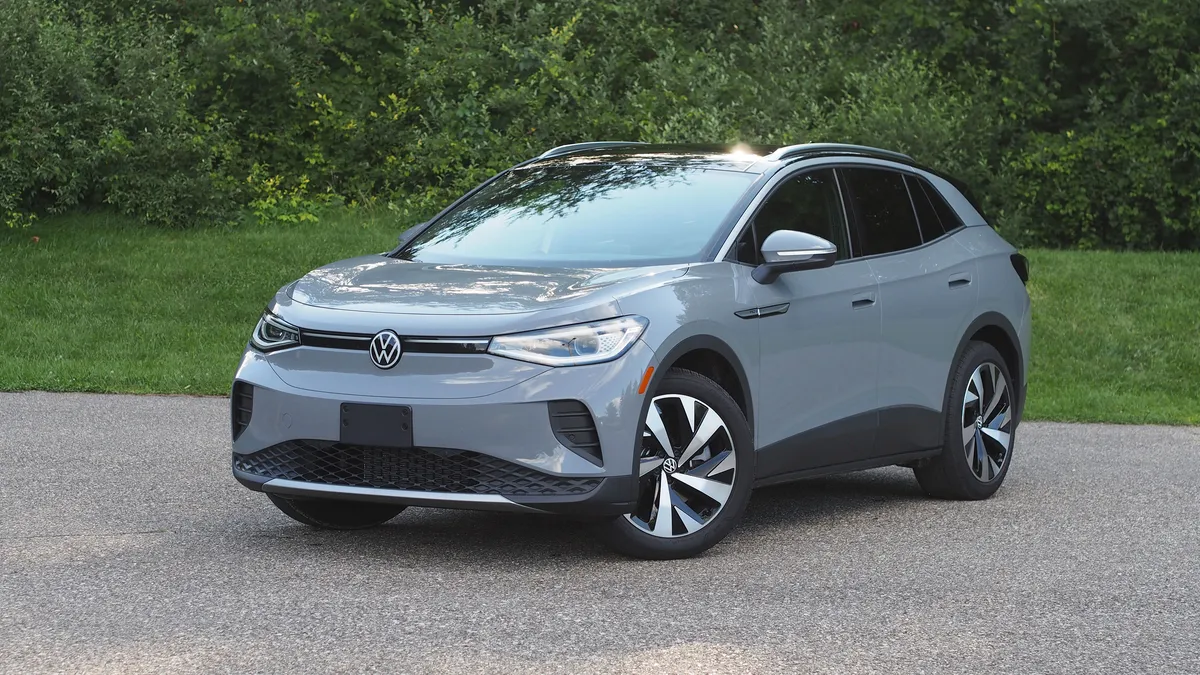
8. Volkswagen ID.4
The Volkswagen ID.4 is designed to be a mainstream electric SUV, and one of its key strengths is how well it handles ordinary charging setups. With a 11 kW onboard AC charger and well-optimized energy management software, the ID.4 is built to function dependably on Level 2 connections and remains effective even when connected to lower-power circuits.
On a 240V Level 2 outlet, the ID.4 typically gains around 30 miles of range per hour, depending on the trim and battery size. This makes it perfectly suited for overnight charging.
More importantly, even on Level 1, the car still pulls in a reliable trickle of energy. If you have access to a standard wall outlet for ten or twelve hours at a stretch, the ID.4 still manages to recover enough charge to keep your daily driving routine uninterrupted.
The user interface in ID.4 includes clear and customizable settings for charging control. Owners can specify what times charging should occur, set maximum charge limits, and monitor charging history.
These features help the car integrate well with low-voltage sources that may be shared or subject to time-of-day restrictions. If you live in a building with older wiring or limited power delivery, the ID.4 works around those constraints smoothly.
A final strength of the ID.4 is its thermal battery conditioning, which prepares the battery for efficient charging even in colder climates or varied conditions.
This becomes especially helpful when you’re drawing power slowly over many hours. The system minimizes losses, so more of the electricity drawn from the wall ends up stored in the battery. The ID.4 is one of the most user-friendly EVs for people charging from non-ideal sources.
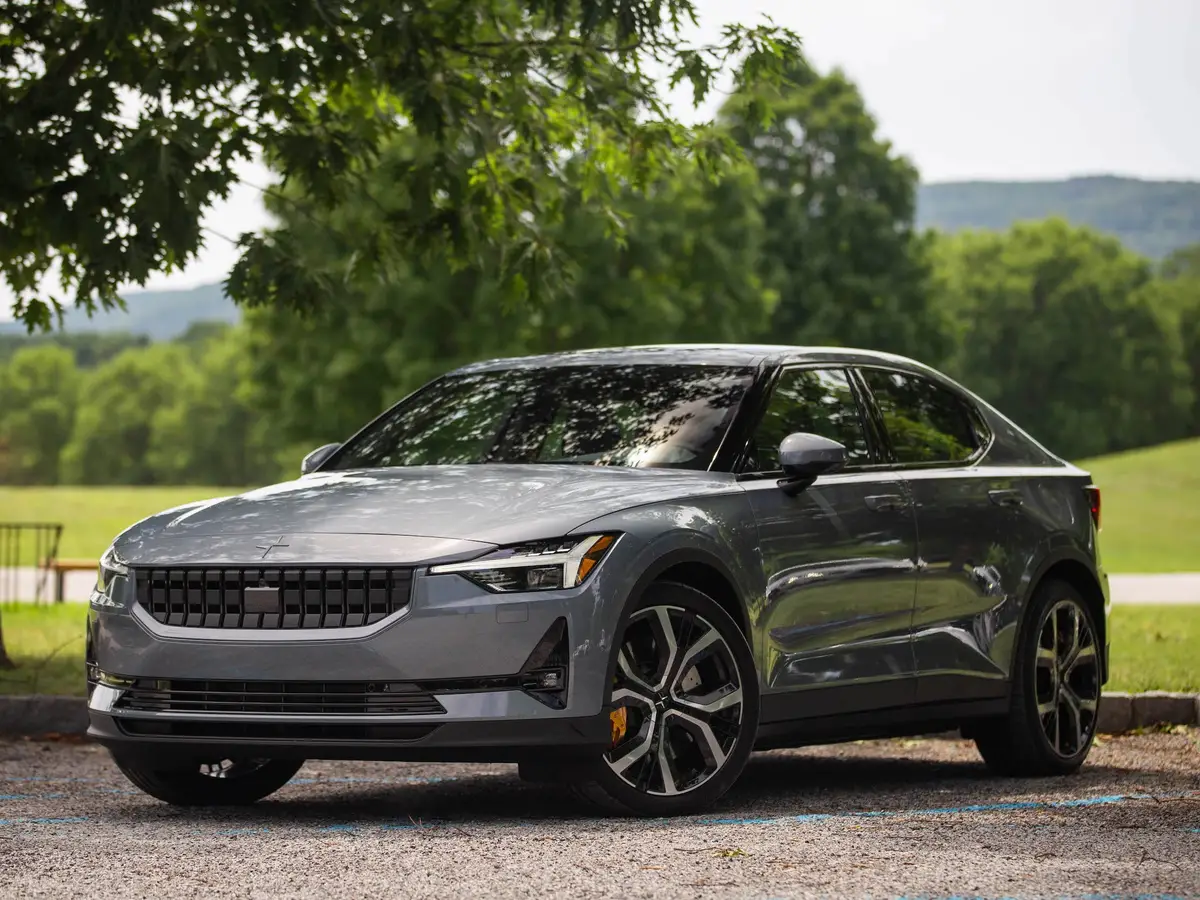
9. Polestar 2
The Polestar 2 offers a combination of minimalist design, premium features, and strong EV performance. It also performs reliably on slower charging setups.
Equipped with an 11 kW onboard charger, the Polestar 2 handles Level 2 power gracefully. But even when limited to Level 1 sources, the vehicle makes the most of every amp thanks to its efficient energy conversion system and software.
On a 240V outlet, you can expect the Polestar 2 to gain about 35 miles of range per hour of charging. That’s competitive with other midsize electric sedans, and it makes overnight charging a simple, hands-off process.
The car’s range estimates are accurate, which helps reduce stress when relying on partial charges from smaller outlets. And because it offers solid efficiency per mile, even slower charges can still translate into real-world usability.
Polestar’s app and infotainment system give users fine control over how and when the car charges. The interface is smooth, and the system responds quickly to scheduling changes.
For users who regularly rely on weaker power supplies, this makes it easier to manage energy usage without constantly plugging and unplugging the car. Battery conservation features also allow users to limit charging to a safe level, which is recommended for long battery life.
Polestar has also paid close attention to thermal battery management, which ensures reliable charging across a range of environments. When connected to a weaker outlet, you don’t want the system to waste energy managing battery temperature unnecessarily.
The Polestar 2’s balance between cooling and heating systems ensures efficient power flow even during long, slow charge sessions. It’s a thoughtful feature that improves real-world practicality.
The Polestar 2 might be positioned as a luxury EV, but it doesn’t require a luxury-level power supply to function efficiently. Its combination of smart software, good battery management, and efficient energy use makes it one of the better options for users who may not always have access to high-voltage charging.
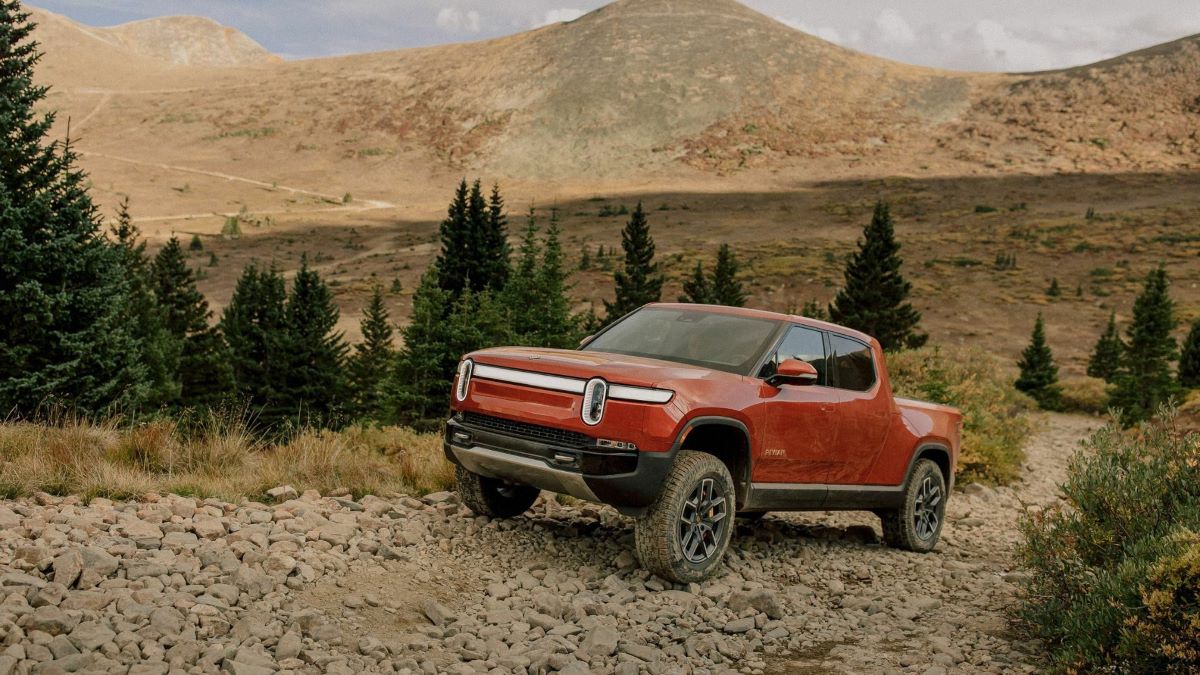
10. Rivian R1T
The Rivian R1T is a rugged electric pickup truck with impressive off-road capabilities, a massive battery, and fast DC charging. However, it’s also built with flexibility in mind and includes features that make it surprisingly usable on low-voltage home setups.
The R1T comes standard with an onboard 11.5 kW charger and includes settings that allow the user to adapt charging speed to their available outlet safely.
With its large battery of 135 kWh, depending on configuration, the R1T takes longer to charge than smaller vehicles. Still, on a 240V Level 2 setup, it gains about 25 to 30 miles of range per hour.
That may seem modest, but it’s very usable for overnight charging, especially if the vehicle is driven within moderate daily limits. For those using a 120V outlet, you can still gain a handful of miles per hour, enough to get through short commutes or top off in between weekend trips.
Rivian’s charging interface is clean and highly adjustable. Users can set amperage limits manually, making it safer to use on older home circuits or when plugging into extension cords during camping or remote work.
These settings help reduce the load on the power source while still allowing meaningful energy transfer over time. The vehicle’s smart scheduling and notification system ensures that the owner always knows exactly how much range they’ll have when they wake up.
Another standout feature is the R1T’s robust thermal management. Even when trickle-charging in cold climates or under load, the system keeps the battery at a stable temperature, allowing slow chargers to operate as efficiently as possible. This is a big advantage for adventurers or rural users who might be charging from a cabin or outpost with limited electricity.
While it may be a big, bold truck, the Rivian R1T doesn’t require a big, bold power supply to be practical. It reflects the company’s commitment to versatility and real-world usability, whether you’re at home, in the city, or off the grid entirely.
Also Read: 5 BMW Engines That Last and 5 That Drain Your Wallet
Electric vehicles are often judged by their high-end specifications, including 0–60 times, battery capacity, and top-tier charging speeds. But those numbers don’t always tell the full story of what it’s like to live with an EV. For most drivers, daily charging happens at home, not at ultra-fast public stations.
And for many, the electrical infrastructure available is far from ideal. A reliable 240V connection might be the best they can get, and others may be stuck with only 120V outlets. In those situations, having a vehicle that charges well on a low-voltage setup isn’t just convenient’s a necessity.
The ten vehicles covered in this article prove that charging on limited power doesn’t have to be frustrating or impractical. These EVs have been engineered with systems that take slow charging seriously.
Whether it’s a smart onboard charger, advanced thermal management, or efficient battery design, each vehicle finds its way to stay ahead of the curve. This isn’t about raw speed or showing off high numbers; it’s about getting enough power back into your car to handle your day without relying on ideal conditions.
Some of the cars, like the Chevrolet Bolt EV or the Nissan Leaf Plus, have been around long enough to show proven reliability on standard home outlets. Others, like the Tesla Model 3 or the Ford Mustang Mach-E, pair innovation with user-friendly controls that let drivers manage charging more precisely.
Vehicles like the Hyundai Kona Electric or the Kia EV6 strike a balance between affordability and smart design, offering efficient charging without needing massive infrastructure upgrades. Meanwhile, higher-end models like the BMW i4 or the Rivian R1T demonstrate that even performance-focused EVs can be engineered to adapt well to slower setups.
What ties all of these vehicles together is that they are well-suited for everyday life. They don’t rely on the assumption that every owner will install a wall-mounted high-speed charger or live near a bank of DC fast chargers. Instead, they meet drivers where they are at home, in the garage, or parked near a basic outlet.
For many people, this makes electric driving more realistic, less expensive, and more environmentally friendly. A low-voltage setup may not be fast, but with the right EV, it can be more than enough.
As more people consider switching to electric vehicles, it’s important to look beyond the biggest, boldest specs. Charging flexibility is often overlooked but makes a huge difference in long-term satisfaction.
If you’re limited to a basic outlet or just want to avoid the expense of upgrading your electrical panel, choosing one of these well-optimized EVs can make ownership smoother.
These cars show that with the right planning and smart engineering, low-voltage charging doesn’t have to feel like a compromise. It can be a reliable part of your routine, quiet, efficient, and perfectly suited to the pace of real life.

